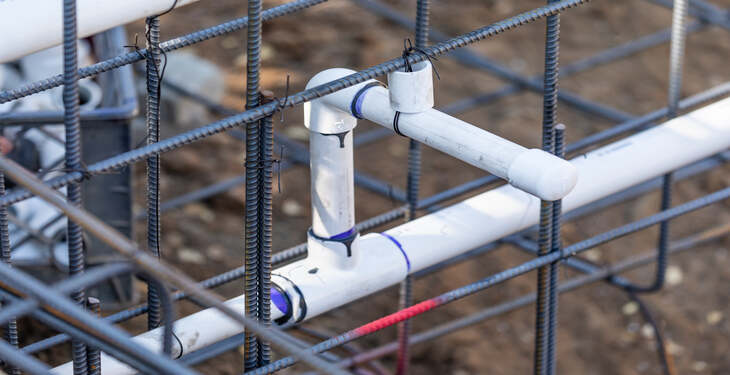Tips to Avoid Mistakes When Installing U-PVC Pipes
U-PVC pipes are widely used in industrial and residential applications due to their durability, lightweight structure, and long lifespan. These pipes provide reliable solutions in various fields such as liquid transfer and infrastructure systems. However, there are some critical points to consider during the installation of U-PVC pipes. Even a small mistake can lead to leaks at connection points, pressure loss, or a decrease in the overall system performance. Therefore, learning the correct installation techniques and avoiding common errors is crucial to ensure the pipe system operates efficiently and has a long service life.
Preparation Process for Installing U-PVC Pipes
Before starting the installation of U-PVC pipes, a careful preparation process is required. The first step is to check the suitability of the pipes and fittings to be used for the project. In this process, a detailed examination of the pipe cutting lengths and diameters is critical to prevent any potential incompatibilities. For the installation to proceed smoothly, all parts must fully comply with the specifications of the project.Additionally, cleaning the pipes and connection points is another important step that should not be overlooked. Before installation, there should be no dust, oil, or residue on the pipes. Such contaminants can negatively affect the durability and tightness of the connections. Cleaning the pipes with a microfiber cloth and mild soapy water helps ensure stronger connections. Furthermore, smoothing the pipe cut edges with a deburring tool is an important step for achieving a proper fit during assembly.
Choosing the Right Adhesive and Connection Materials
Adhesives and connection materials used in the installation of U-PVC pipes directly affect the reliability and long-term durability of the system. Solvent-based adhesives specially developed for these pipes provide high leak resistance and maintain durability over time. Choosing the right adhesive is one of the key factors determining the success of the installation. When selecting connection materials, the system’s pressure level, operating temperature, and the type of fluid it will carry must be considered. Using incorrect materials can cause leaks or early deformation at the connection points. It is important to shake the adhesive well before application and apply it in a thin layer to achieve optimal bonding strength. Additionally, using the same type of adhesive for all connections helps ensure consistency and reliability.
Proper Alignment and Placement of U-PVC Pipes
Proper alignment of U-PVC pipes is critically important for the functionality and efficiency of the system. To ensure regular water flow and balanced pressure, pipes must be installed following natural slope rules. Incorrect slopes or sharp turns can negatively affect water flow and reduce system efficiency. When placing the pipes, particular attention should be paid to slope angles and alignment standards to ensure smooth flow. Additionally, securing the pipes is equally important. Appropriate clamps or supports should be used to prevent leaks and connection issues caused by vibrations and movements. Properly securing the pipes helps ensure the system's longevity and minimizes the risk of malfunctions.
Common Mistakes and Solutions in U-PVC Pipe Installation
Preventing common mistakes in U-PVC pipe installation enhances both the system's durability and performance. One of the most frequent issues is insufficient cleaning of connection points. Dirty surfaces reduce adhesive quality and can lead to leaks in the joints. To avoid this problem, all pipe surfaces and connection points should be thoroughly cleaned and dried before installation. Another common mistake stems from using incorrect adhesives. Unsuitable adhesives can negatively affect the durability and watertightness of connections. Therefore, only solvent-based adhesives specially formulated for U-PVC pipes should be used. Additionally, pipes cut with burrs or at irregular angles can cause installation problems. After cutting, removing any burrs from the pipe edges and ensuring a clean, straight cut will improve joint strength.
U-PVC Pipe System Testing and Final Inspections
After the installation is completed, testing the system is essential to detect any potential errors early and to ensure that the system operates properly. During the test, it is a safe approach to start with low pressure and gradually increase it. All connection points should be carefully observed for any possible leaks. A simple method to detect leaks is to use soapy water. When soapy water is applied to the connection points, the formation of bubbles indicates a leak. Once leak-tightness is confirmed, the system can be put into full operation. These final inspections are critical for the successful completion of the installation and to ensure a long-lasting system.



 BİZE YAZIN
BİZE YAZIN



